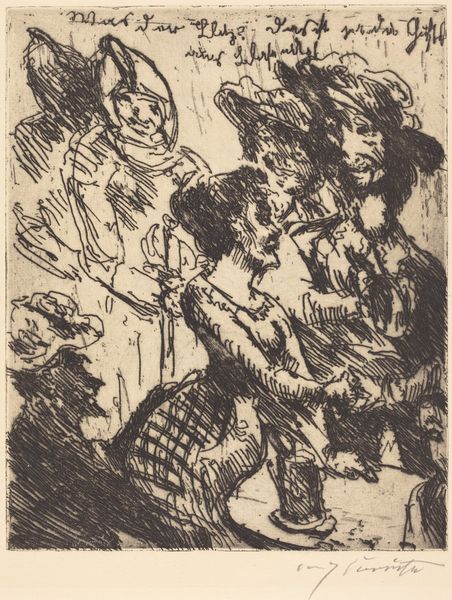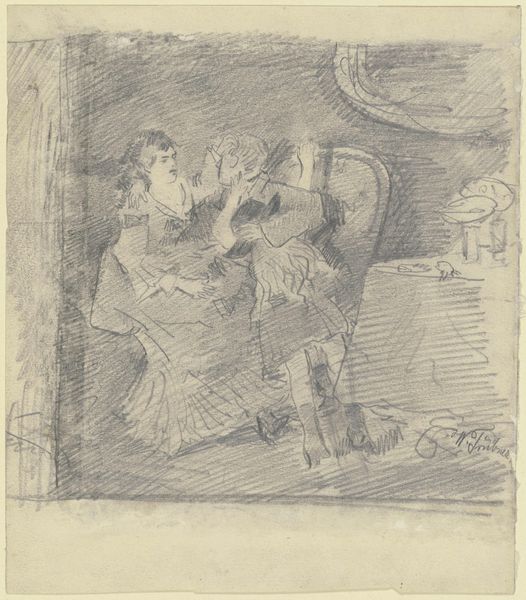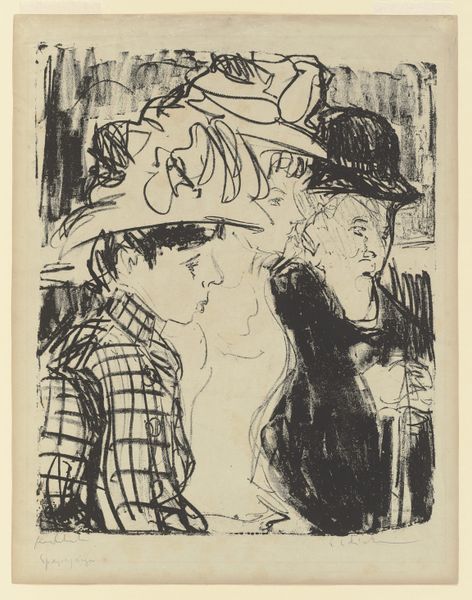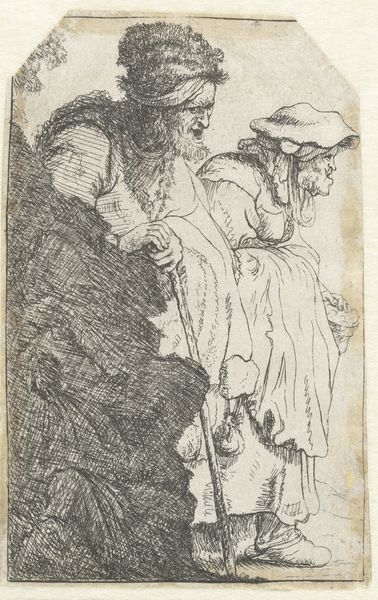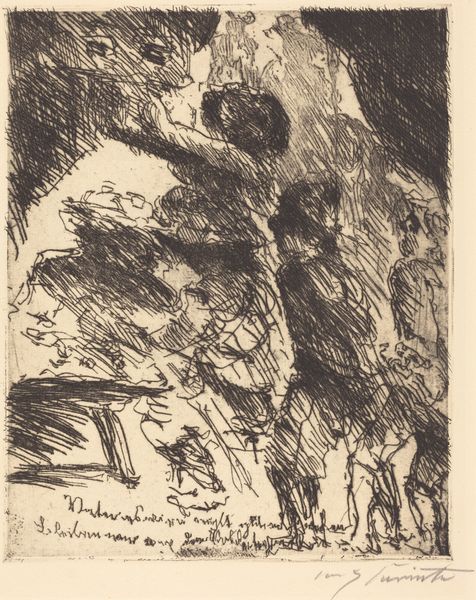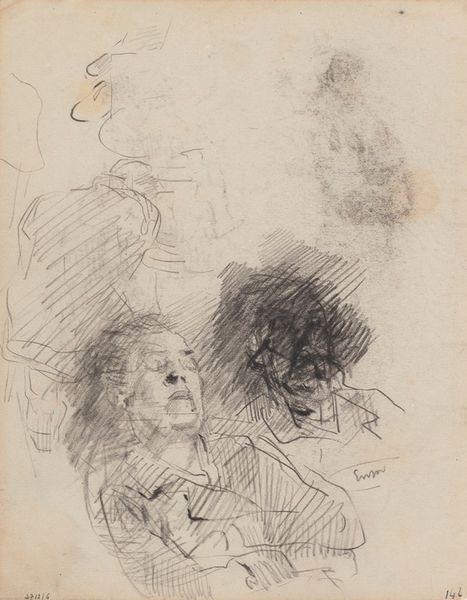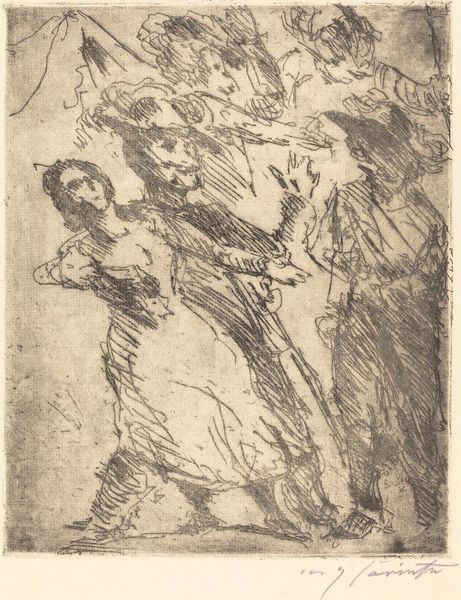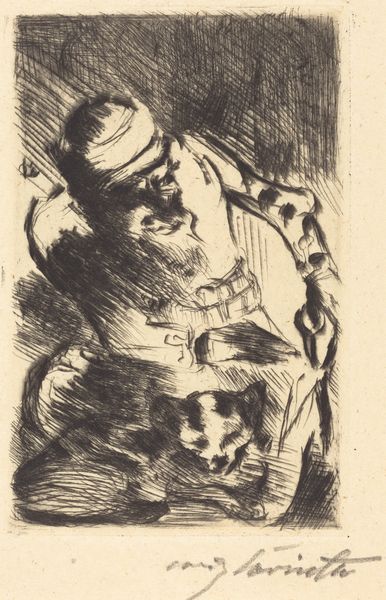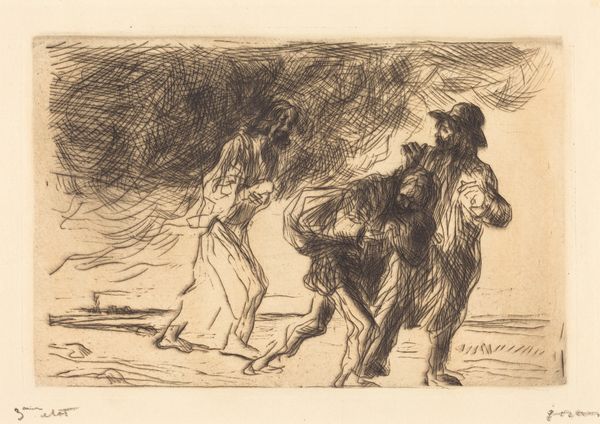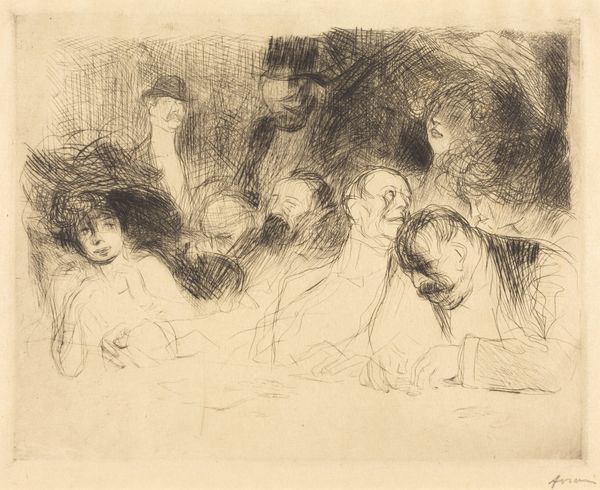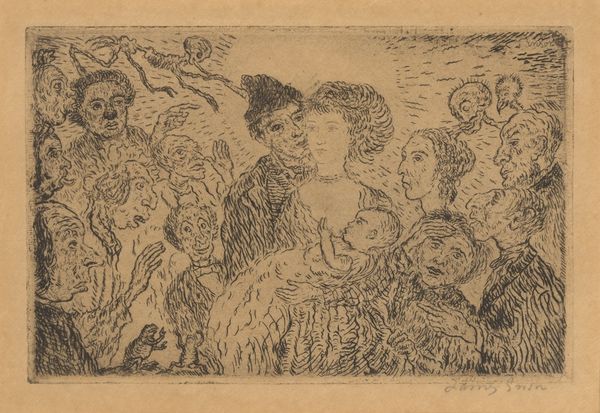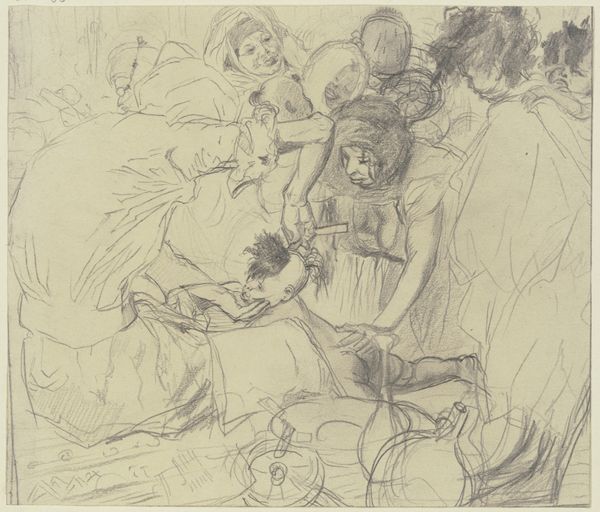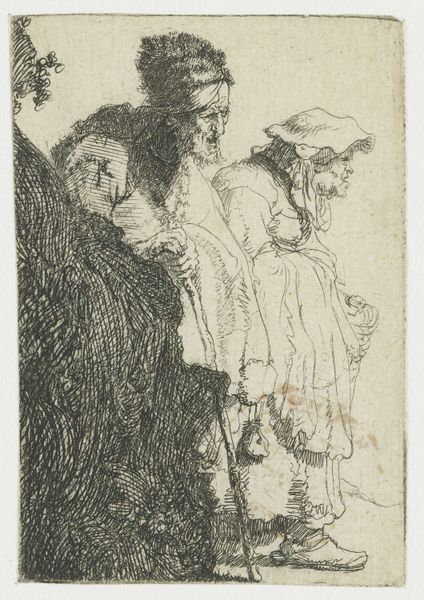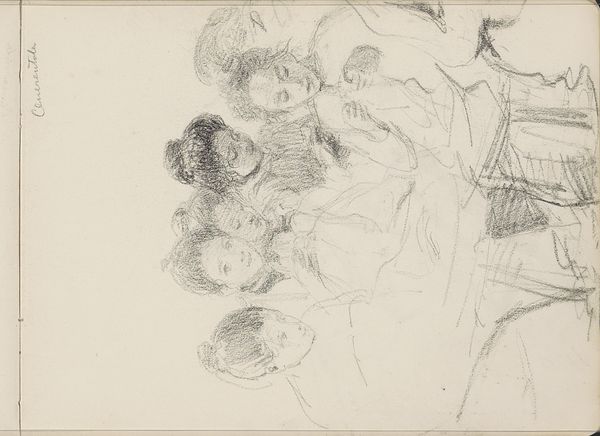
"Einer dirne schön gesicht muss allgemein sein wie's sonnenlicht" ("A Pretty Girl's Face is Like the Sunshine") 1923
0:00
0:00
print, etching
#
portrait
# print
#
etching
#
figuration
#
expressionism
Dimensions: plate: 20.7 cm (8 1/8 in.) sheet: 35.8 x 29 cm (14 1/8 x 11 7/16 in.)
Copyright: National Gallery of Art: CC0 1.0
Editor: Here we have Lovis Corinth’s 1923 etching, "'Einer dirne schön gesicht muss allgemein sein wie's sonnenlicht' (A Pretty Girl's Face is Like the Sunshine)". The frenetic linework almost obscures the figures; it's quite a departure from traditional portraiture. How would you approach an interpretation of this print? Curator: Formally, the etching displays a remarkable dynamism through the density and directionality of the lines. Notice how Corinth employs hatching and cross-hatching to create areas of deep shadow and highlights. The spatial relationships are deliberately ambiguous, fostering a sense of unease. Observe the deployment of line as form. Do you agree with this reading? Editor: Yes, the density is striking, almost claustrophobic. It does create tension but, aside from that, do you think there's anything to make of the clustered group itself, or the relationship to the inscription on top? Curator: Precisely! The text above translates to, "A pretty girl's face must be as common as the sunlight". This interplay is crucial. Semiotically, we can interpret the clustering of figures alongside this phrase as a deliberate fragmentation of beauty and its inherent accessibility. The artist explores how commodification flattens and abstracts what should be regarded as beautiful, unique, and whole. Editor: So, it is not merely about rendering, but the idea behind it? I did not appreciate the work that it's conveying. Curator: The two are intimately entwined. The fragmented form enables Corinth to address that period's commodification and idealization of women in urban settings. A perfect example of form informing function. Editor: Thank you for that analysis; now I see there's much more at play. Curator: Indeed. These visual relationships show how expression is found within form, which then reinforces expression.
Comments
No comments
Be the first to comment and join the conversation on the ultimate creative platform.
